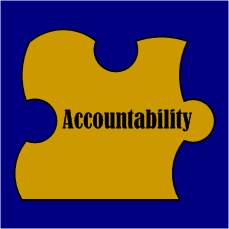Wisconsin improves child injury reporting

“A law spurred by the beating death of a 13-month-old Milwaukee boy has significantly improved the public accountability of those charged with protecting Wisconsin’s abused and neglected children, according to a state-by-state analysis of child maltreatment disclosure regulations.
Wisconsin’s disclosure practices ranked among the worst in the country in the spring of 2008, when the first report was released by the Children’s Advocacy Institute at the University of San Diego School of Law and by the child welfare advocacy group First Star.
The 2008 study, presented as a kind of report card, gave Wisconsin a D, behind Arkansas, Alabama and Mississippi.
Wisconsin was one of the most improved states in the 2012 report. Its grade rose to B-.
The 2012 report gave mediocre or poor grades to 20 states, in cluding some of the nation’s most populous, such as California, New York and Texas.
Authors of the report, titled “State Secrecy and Child Deaths in the U.S.,” argue for transparency – and with it, accountability – in the investigation of egregious child abuse and death.
“The death of an abused or neglected child is not only an unspeakable tragedy, it is also a red flag that something has gone terribly wrong with the child welfare system responsible for that child,” said Robert C. Fellmeth, Children’s Advocacy Institute executive director and Price Professor of Public Interest Law at the University of San Diego.
“Yet, too often, these cases are shrouded in secrecy and, as a result, literally fatal flaws in state systems go undetected and opportunities to fix them are mixed.”
The report notes that more than 1,770 American children are killed and roughly 509,000 are severely injured through abuse or neglect each year.
While every state has an extensive system of rules and procedures designed to limit the unwarranted removal of children from their homes and families after allegations of abuse, the report says, it is generally left to the public to hold officials accountable and seek reform when the failure to remove children results in harm.
“Systematic shortcomings can’t be fixed if no one sees what they are,” said one of the report’s researchers, Amy Harfeld.
“Holding states accountable through transparency and public discourse will promote public debate and lead to reforms that will better safeguard all children.”
Milwaukee County saw this dynamic unfold after the November 2008 beating death of 13-month-old Christopher Thomas.
News that his court-appointed kinship caregivers tortured him and his 2-year-old sister even as caseworkers repeatedly visited their home outraged the community. The head of the state-run Bureau of Milwaukee Child Welfare stepped down, and the agency that employed the caseworkers lost its state contract.
A series of stories by the Journal Sentinel titled “Fatal Care” combed through five years of Milwaukee County medical examiner’s reports and found that at least 22 children died in Milwaukee County between 2004 and 2008 despite clear warning signs to the bureau that they were at risk.
In October 2010, the Child Welfare Disclosure Act was passed without opposition by state lawmakers and quickly signed by the governor. It requires the Department of Children and Families to notify the public when a child has been killed or suffered serious injury.
These notifications are posted on the Department of Children and Families website. Susan Conwell, executive director of Milwaukee-based Kids Matter, was a strong advocate for Wisconsin’s disclosure act.
“Before the act, there was a veil of secrecy around child homicides,” she said. “No one knew if the child welfare system was involved with the family or if the child was harmed in foster care. The state or county would just say, ‘Trust us, we know what we are doing.’ ”
“Now the public has a chance to peek in the window,” Conwell said.
Still a problem, Conwell said, is the ability of various agencies to share information when working with children.
She cited the case of the 15-year-old Madison girl, found wandering near her home in February, who investigators say suffered years of starvation, torture and sexual abuse even though several neighbors and the girl’s school contacted child protective services; even though police, told that the girl appeared to be in distress, visited her home; even though probation agents supervising her stepbrother for a sexual-assault conviction also visited her home.
“A little collaboration might have saved her years of torture,” Conwell said.
While the report praised the breadth of the Wisconsin disclosure law, it criticized what it called a “balancing test” that permits the Department of Children and Families to withhold information if, among other things, the best interest of the child and the child’s family outweighs the interest of the public in obtaining that information.
“The importance of ferreting out the causes of child abuse deaths and near deaths trumps the need to protect the families involved,” said Peter Samuelson, co-founder and president of First Star.
DCF spokeswoman Sara Buschman said the disclosure act is not the only tool the department uses to inform the public or to identify potential flaws in the system.
She pointed to KidStat, a program that tracks children and families receiving state services, and the annual Child Abuse and Neglect Report, which is available online. “These tools provide a broad and transparent picture of the efforts Wisconsin has undertaken to ensure children are cared for,” Buschman said.
Wisconsin improves reporting of injuries to children under its watch
[Journal-Sentinel 4/22/12 by Crocker Stephenson]


Recent Comments